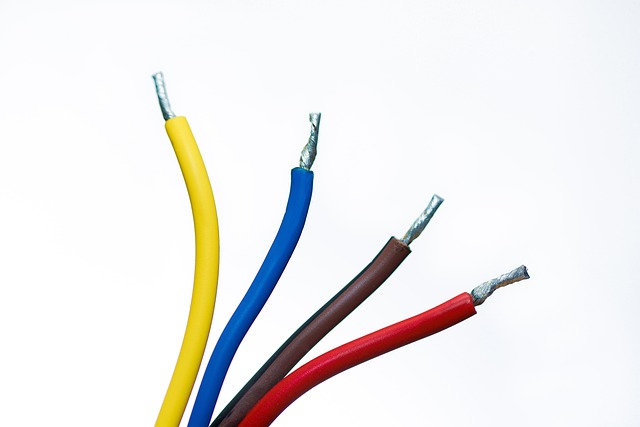Have you ever considered the damage rodent teeth can cause in your home? These tiny creatures might seem harmless, but their gnawing obsession can wreak havoc in your living space.
Their incisors never stop growing, making them a real threat to your electrical systems, furniture, and food safety. Get ready for the lowdown on their relentless gnawing and the potential damage they can inflict on your home.
Continuous Teeth Growth
Rodents, particularly rats and mice, have a distinct dental adaptation that allows their incisors to grow continuously throughout their lives. This evolutionary trait equips them for the rigors of their natural environments, where gnawing is a fundamental survival skill.
However, when these pests invade human spaces, their ever-growing teeth become a severe problem for home and business owners alike. While sharp and sturdy, rodents must chew incessantly to curtail this rapid growth and wear down their hardy incisors.
This drive to gnaw is more than just a peculiar quirk; it’s a biological imperative. Failure to gnaw regularly could lead to overgrown teeth that hinder their ability to eat, groom, and navigate their surroundings.
Rats and mice exploit their gnawing capabilities to breach structures, gain entry into buildings, and compromise even the most robust materials. Wires, pipes, insulation, and wooden components fall prey to their insatiable chewing.
Rodent Chewing and Gnawing
The design of rodent teeth, characterized by their continual growth, makes them adept for gnawing. This adaptation, while remarkable, transforms into a homeowner’s nightmare as these pests target various materials. Nothing seems to escape their insatiable need to chew from wood to wires, insulation to packaging.

Electrical wiring stands as a primary target. The pliable texture of wiring becomes an inviting chewing material for rodents, leading to stripped insulation. This poses a dual threat—disrupting electrical systems’ functionality and increasing the risk of electrical fires due to exposed wires.
Structural components are not spared from rodent teeth. Wooden beams, door frames, and furniture fall victim to their ceaseless chewing. Beyond the visible damage, this behavior can compromise the integrity of your home’s structure.
Insulation materials, crucial for temperature control and energy efficiency, are also in their line of sight. Rodents shred insulation for nesting materials, causing thermal leaks that translate into energy wastage and higher utility bills.
Even packaging and stored items aren’t safe from sharp rodent teeth. Cardboard boxes, plastic containers, and stored fabrics become targets for rodent teeth, leading to contamination and loss.
Pipes and plumbing systems face vulnerability as well. Rodent gnawing can result in leaks, water damage, and mold growth, posing both financial and health risks.
So, how can you counter this unnoticed destruction? Vigilance is key. Regular property inspections to spot signs of rodent activity—like chew marks and droppings—can aid in catching infestations early. Sealing off entry points, securely storing food, and implementing preventive measures are crucial to deterring rodents.
Checking Your Home for Rodent Teeth Marks
Keeping an eye out for rodent teeth marks around your home can provide valuable clues about potential infestations and the extent of rodent activity. Here’s what you need to know:

- Chew Marks: Rodents, like rats and mice, are notorious chewers due to their continuously growing teeth. Look for chew marks on various surfaces, including wood, plastic, paper, and electrical wires. These marks may appear as small, irregular holes or gnawed edges.
- Wooden Structures: Wooden beams, door frames, baseboards, and furniture are common targets for rodent gnawing. If you notice fresh gnaw marks or wood shavings around these areas, it’s a clear sign of rodent activity.
- Electrical Wiring: Check for chewed wires or insulation, which could lead to short circuits, electrical malfunctions, and fire hazards.
- Insulation: Rodents may tear and shred insulation materials for nesting purposes. If you find insulation scattered around your home, particularly in hidden corners or attic spaces, it’s a strong indicator of rodent presence.
- Food Packaging: Rodents are resourceful and can gnaw through various types of packaging, including cardboard and plastic, to access food. Check your pantry for signs of gnawing on food packages.
- Pet Food Containers: Keep an eye on your pet’s food storage area. Pet food attracts rodents, and their gnawing marks may appear on the containers. Take a look at this article for helpful tips on keeping your pet’s food safe!
- Outdoor Areas: Examine outdoor structures like sheds, garages, and woodpiles for chew marks. Rodents may seek shelter and nesting materials in these areas.
- Pipes and Wiring: Rodents may also target pipes and wiring for gnawing. Inspect these areas for any visible signs of damage or gnaw marks.
- Fresh Marks: Fresh gnaw marks will appear lighter in color compared to older, weathered marks. This can give you an idea of recent rodent activity.
- Feces and Tracks: While not directly related to teeth marks, keep an eye out for rodent droppings and tracks, as they can provide additional evidence of their presence.
- Entry Points: If you find gnaw marks near openings in walls, foundation gaps, or vents, it could indicate that rodents are attempting to access your home.
Remember, identifying rodent teeth marks requires close observation and a keen eye. If you suspect rodent activity or an infestation, it’s advisable to seek professional pest control assistance to address the issue effectively and prevent further damage.
Get Rid of Rodents with proof.!
With proof. Pest Control, you’re partnering with experts dedicated to providing rodent-free living. We offer insights into rodent behavior and prevention, cover various rodents, and address minor issues or severe infestations.
Trust us to solve your current problem while safeguarding your property for the future. Contact proof. Pest Control today to regain a rodent-free home!

